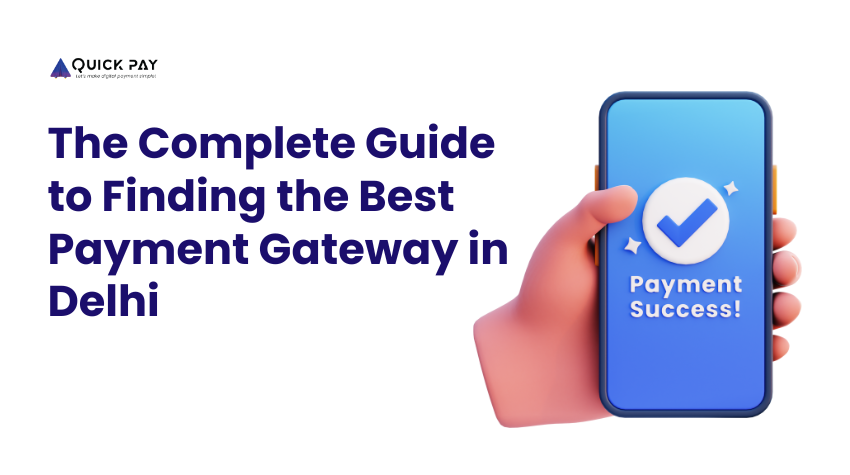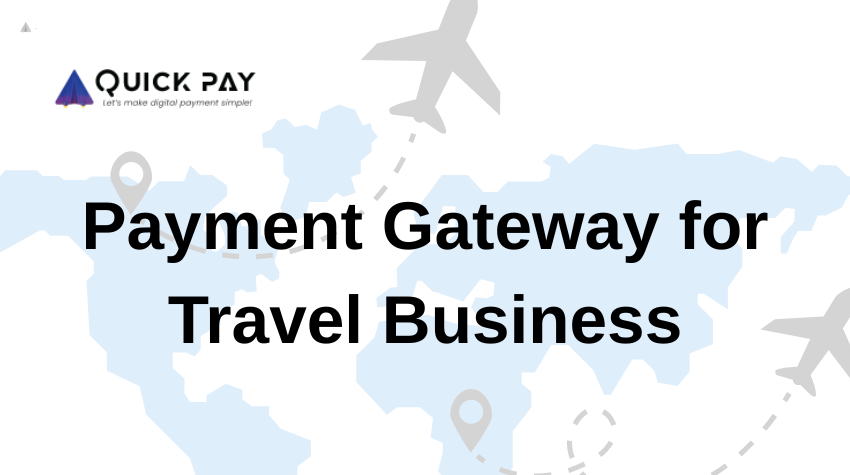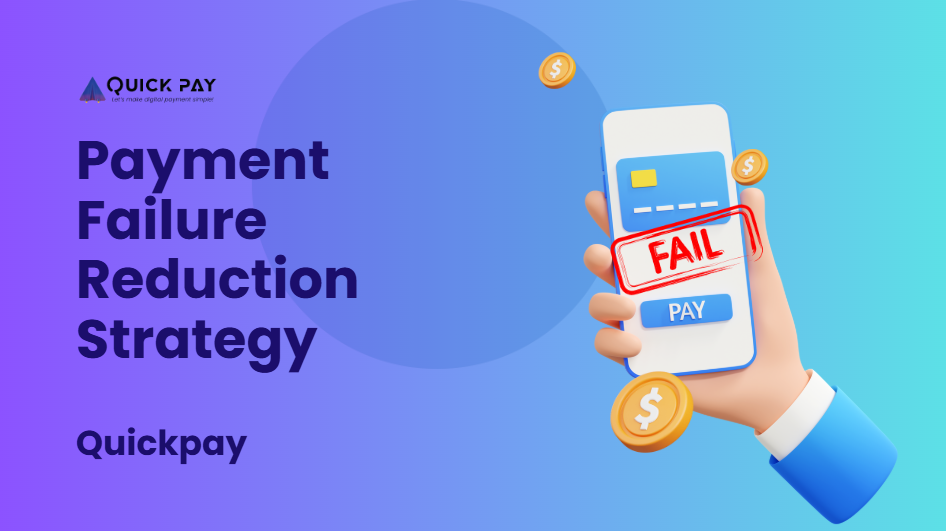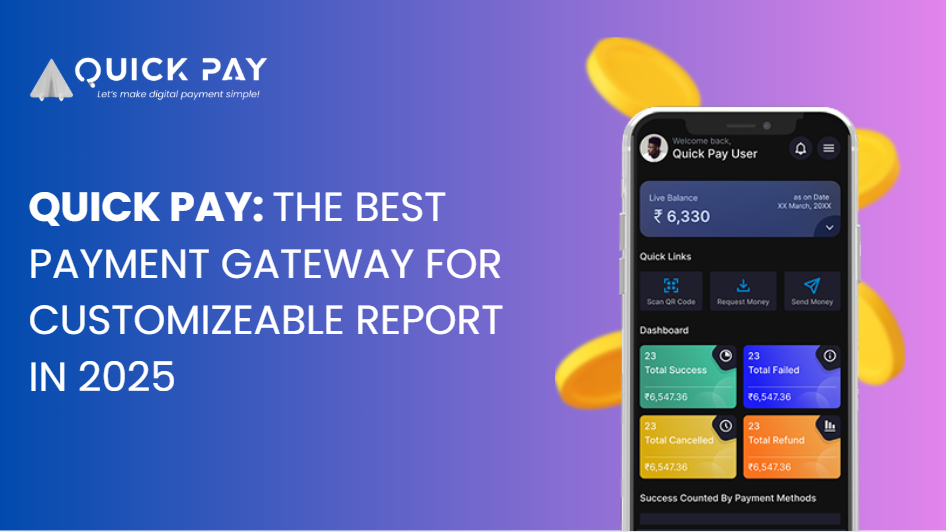The Complete Guide to Finding the Best Payment Gateway in East Delhi: Everything You Need to Know in 2025
Introduction: The Digital Payment Revolution in East Delhi
In the bustling commercial hubs of East Delhi - from the vibrant markets of Laxmi Nagar to the modern business centers of Preet Vihar, from the tech-savvy entrepreneurs of Mayur Vihar to the traditional retailers adapting to digital trends in Gandhi Nagar - the quest for the best payment gateway in East Delhi has become more critical than ever before. The digital transformation sweeping across India has fundamentally altered how businesses operate, and payment processing sits at the heart of this revolution.
Consider this scenario: A local handicraft business in Shahdara that traditionally relied on cash transactions now finds itself catering to customers from across India through online platforms. Similarly, a restaurant chain in Vikas Marg Extension needs to seamlessly process payments from dine-in customers using contactless methods, online food delivery orders, and mobile app-based loyalty programs - all simultaneously. These real-world challenges faced by East Delhi businesses highlight why understanding and selecting the right payment gateway is no longer a luxury but an absolute necessity for survival and growth in today's competitive marketplace.
The payment gateway landscape has undergone a remarkable transformation over the past three decades, evolving from simple transaction facilitators into sophisticated, multi-faceted platforms that enable global commerce, enhance customer experiences, and provide valuable business insights. For businesses in East Delhi, this evolution presents both tremendous opportunities and complex decisions that require careful consideration and expert guidance.
Understanding Payment Gateways: The Digital Bridge to Financial Success
What Exactly is a Payment Gateway?
A payment gateway functions as the digital equivalent of a traditional credit card terminal, but with exponentially more sophisticated capabilities and far-reaching implications for your business success. To understand this concept clearly, imagine a payment gateway as a highly secure digital bridge that connects four critical entities: your customer, your business, your bank account, and the customer's financial institution.
When a customer in East Delhi decides to purchase a handcrafted item from your online store, the payment gateway initiates a complex sequence of events that occurs in mere seconds. First, it securely captures the customer's payment information through encrypted channels, ensuring that sensitive data like credit card numbers never touch your servers directly. Next, it communicates with the customer's bank to verify account validity and available funds. Simultaneously, it performs sophisticated fraud checks using artificial intelligence algorithms that analyze hundreds of data points to assess transaction legitimacy. Finally, it facilitates the actual money transfer from the customer's account to your business account while maintaining detailed transaction records for accounting and compliance purposes.
However, modern payment gateways extend far beyond simple transaction processing. They serve as comprehensive business intelligence platforms that provide valuable insights into customer behavior, purchase patterns, and market trends. For instance, a boutique in Preet Vihar might discover through payment gateway analytics that customers from certain postal codes prefer specific payment methods, enabling targeted marketing strategies and inventory planning.
The Critical Role in Business Operations
The importance of selecting the right payment gateway becomes evident when examining real-world business scenarios in East Delhi. Consider a growing electronics retailer in Laxmi Nagar that processes approximately 500 transactions daily across multiple channels - their physical store, website, mobile app, and various marketplace platforms. Without a robust payment gateway infrastructure, this business would face numerous operational challenges including manual reconciliation of transactions, increased fraud risk, customer dissatisfaction due to payment failures, and missed sales opportunities from unsupported payment methods.
A well-chosen payment gateway addresses these challenges comprehensively while providing additional benefits that directly impact the bottom line. It enables automatic reconciliation of transactions across all channels, reducing accounting overhead by up to 80%. Advanced fraud protection mechanisms can decrease chargebacks by 60-70%, protecting both revenue and reputation. Support for multiple payment methods, including popular digital wallets, can increase conversion rates by 15-25% according to industry studies.
The Fascinating Evolution of Payment Gateways: From Chaos to Sophistication
The Pioneer Era (1994-2004): Building the Foundation
The story of payment gateways begins in the mid-1990s when e-commerce pioneers created an unprecedented demand for secure online payment processing. During this era, the existing financial infrastructure was woefully inadequate for handling digital transactions. Traditional payment methods such as manual credit card processing, where merchants would physically call banks to verify transactions, and the archaic practice of mailing checks for online purchases created significant bottlenecks and security vulnerabilities.
The early attempts to solve these problems revealed fascinating contrasts in security philosophies that continue to influence payment gateway design today. Some early payment service providers pioneered completely non-cryptographic approaches that seem almost quaint by today's standards. These systems worked through elaborate email-based confirmation processes: when a customer wanted to make a purchase, the merchant would email the payment provider with the buyer's identification number. The provider would then email the customer asking for confirmation with options like "yes," "no," or "fraud." Only with a "yes" response would the transaction proceed through traditional banking channels.
In stark contrast, other pioneering companies focused on encryption-first approaches that laid the groundwork for modern secure transactions. These providers developed sophisticated software programs that customers could download to store their encrypted credit card information directly on their computers. Merchants would use specialized server software to process transactions without ever seeing the actual credit card numbers, creating a revolutionary level of security for the time.
The ultimate market validation favored encryption-based solutions, demonstrating that consumers and businesses were willing to embrace more complex technologies in exchange for genuine security. This early preference for robust security over simplicity established a fundamental principle that continues to drive payment gateway innovation today: customer trust is paramount, and achieving that trust requires substantial investment in cutting-edge security technologies.
The Standardization Revolution (2004-2010): Creating Order from Chaos
By 2000, the rapid growth of online commerce had created a critical security crisis. Online merchants were losing an average of 3.6% of their sales to fraudulent credit card transactions, creating unsustainable financial pressure on businesses and eroding consumer confidence in digital payments. The problem was compounded by a confusing array of security standards, with each major credit card company maintaining its own unique set of requirements that often conflicted with competitors' standards.
This fragmented approach created what industry experts described as a "compliance nightmare" for merchants who accepted multiple card types. A typical retailer in East Delhi accepting major credit cards would need to comply with five different security protocols, each with distinct technical requirements, audit procedures, and penalty structures for non-compliance. The complexity was so overwhelming that many businesses either avoided online payments altogether or implemented minimal security measures that left them vulnerable to attacks.
The solution emerged through unprecedented industry collaboration. In 2004, the five major global card companies came together to establish a single, unified security standard known as the Payment Card Industry Data Security Standard (PCI DSS). This collaborative effort represented a fundamental shift from competitive secrecy to cooperative security, recognizing that the entire payments ecosystem would benefit from standardized protection measures.
The creation of PCI DSS version 1.0 in December 2004 established twelve core requirements that formed the foundation of payment security. These requirements covered network security, data protection, vulnerability management, access control, monitoring, and information security policies. For businesses in East Delhi, this standardization meant that compliance efforts could focus on a single, comprehensive framework rather than navigating multiple conflicting requirements.
The establishment of the Payment Card Industry Security Standards Council in 2006 further strengthened this foundation by creating a dedicated organization responsible for evolving and maintaining the standards as new threats emerged. This council continues to release updated versions of PCI DSS, with the most recent version 4.0.1 incorporating advanced requirements for multi-factor authentication, cloud security, and protection against sophisticated cyber attacks.
The API Revolution (2011-2018): Transforming Infrastructure into Innovation Platform
The period from 2011 to 2018 witnessed what industry experts call the "API Revolution" - a fundamental transformation that converted payment gateways from simple transaction processing tools into sophisticated, programmable business infrastructure. This revolution was driven by changing business needs, technological advances, and the emergence of a new generation of technology companies that viewed payments as a platform for innovation rather than a necessary utility.
To understand the magnitude of this transformation, consider the three distinct generations of payment APIs. The first generation, dominating the 2000s, consisted of basic gateway APIs that offered rudimentary card processing through simple HTML forms. These systems were rigid, requiring manual updates for any changes, and provided minimal control over user experience. Customers would typically be redirected to a hosted payment page that looked completely different from the merchant's website, creating a jarring and potentially trust-damaging experience.
The second generation, emerging in the 2010s, introduced significant improvements through the adoption of modern web technologies like RESTful APIs and JSON-based data exchange. These systems introduced tokenization for secure data storage, expanded support for alternative payment methods beyond traditional credit cards, and provided better integration options. However, merchants still needed to manage complex transaction logic independently, requiring substantial technical expertise and ongoing maintenance.
Today's third generation represents a paradigm shift toward modular, API-first platforms that treat payments as configurable infrastructure rather than fixed functionality. The defining characteristic of these modern systems is that most changes to payment flows require configuration adjustments rather than custom coding. These platforms support intelligent routing that automatically selects the most cost-effective and reliable payment processor for each transaction, enable complex business models like split payments and recurring billing, and can be integrated into existing systems in under 24 hours rather than weeks or months.
For a business in East Delhi, this evolution means that sophisticated payment capabilities previously available only to large corporations with dedicated development teams are now accessible to small and medium enterprises. A local fashion retailer can now implement subscription billing for loyal customers, split payments between multiple vendors in a marketplace model, and automatically optimize transaction routing to minimize costs - all through simple configuration rather than complex programming.
The Modern Payment Gateway Ecosystem: Opportunities and Challenges
Market Dynamics and Growth Trajectory
The global payment gateway market is experiencing unprecedented expansion, with valuation increasing from approximately USD 26.5 billion in 2024 to a projected USD 93.3 billion by 2034. This represents a robust Compound Annual Growth Rate (CAGR) of 13.8%, indicating sustained demand for advanced payment processing capabilities across all business sectors.
For businesses in East Delhi, these market dynamics create particularly compelling opportunities. The Asia Pacific region, which includes India, is driving significant growth with a projected CAGR of 13.9%, outpacing global averages and indicating strong regional adoption of digital payment technologies. This growth is fueled not only by traditional e-commerce expansion but also by the increasing digitization of business-to-business (B2B) transactions, the rise of subscription-based business models, and the growing demand for seamless omnichannel payment experiences.
The market expansion is particularly pronounced in industry verticals that are well-represented in East Delhi's business landscape. Healthcare providers are increasingly requiring secure payment processing for telemedicine consultations and medical device purchases. Educational institutions need sophisticated payment systems for online course fees, examination charges, and educational material purchases. Travel and hospitality businesses require multi-currency support and complex booking payment flows. Manufacturing companies are digitizing their B2B payment processes to improve cash flow and reduce administrative overhead.
Competitive Landscape and Strategic Positioning
The current payment gateway ecosystem features a diverse array of providers, each with distinct strategic focuses and target markets. Global technology companies have established dominant positions through developer-friendly APIs designed for rapid integration and international scalability. These providers typically excel in supporting high-growth technology businesses and companies with complex, multi-market operations.
Small business-focused providers concentrate on integrated solutions that combine payment processing with point-of-sale systems, inventory management, and basic customer relationship management features. These solutions are particularly attractive to East Delhi retailers who need comprehensive business management tools rather than standalone payment processing.
Traditional financial services companies leverage their extensive banking networks and established relationships with large enterprises to maintain strong positions in the corporate market. These providers often excel in handling high-volume transactions, complex compliance requirements, and integration with existing enterprise resource planning systems.
Regional and local providers play crucial roles by offering specialized knowledge of local payment preferences, regulatory requirements, and market conditions. For businesses in East Delhi, these providers often provide superior customer support in local languages and deeper understanding of regional business practices.
The competitive dynamics create opportunities for businesses to select providers that align precisely with their specific needs, growth trajectory, and operational requirements. However, this diversity also creates complexity, requiring careful evaluation of multiple factors beyond simple pricing comparisons.
Three Critical Operational Models: Strategic Framework for Selection
Hosted Payment Gateway Model: Simplicity with Trade-offs
The hosted payment gateway model represents the most straightforward approach to online payment processing, making it particularly attractive to new businesses in East Delhi that need to establish payment capabilities quickly without substantial technical investment. Under this model, customers are redirected from your website to the payment provider's secure platform to complete their transactions, similar to how customers might be directed to a separate checkout counter in a department store.
The primary advantage of this approach lies in its comprehensive risk mitigation. The payment provider assumes complete responsibility for security compliance, including adherence to PCI DSS requirements, fraud monitoring, and data protection. For a startup textile business in Gandhi Nagar, this means avoiding the substantial costs and technical complexity associated with implementing and maintaining security infrastructure. The provider handles all aspects of secure data transmission, storage, and processing, effectively eliminating the merchant's exposure to sensitive payment information.
Implementation of hosted payment gateways typically requires minimal technical expertise. Integration often involves adding simple HTML forms or basic API calls to redirect customers to the payment provider's platform. This simplicity enables businesses to begin accepting online payments within hours rather than weeks, providing immediate access to digital revenue streams without extensive development resources.
However, this simplicity comes with notable limitations that can impact long-term business growth. The redirect process creates a discontinuous user experience that can confuse customers and potentially increase cart abandonment rates. When customers are suddenly transferred to a different website with different branding, layout, and navigation, they may question the legitimacy of the transaction or simply abandon their purchase due to confusion.
Customization options are typically limited in hosted models, restricting your ability to maintain consistent branding throughout the checkout process. This limitation can be particularly problematic for businesses building strong brand identities or those operating in premium market segments where consistent visual presentation is crucial for customer confidence.
Self-Hosted Payment Gateway Model: Maximum Control with Maximum Responsibility
The self-hosted payment gateway model represents the opposite extreme, providing businesses with complete control over every aspect of the payment process while placing full responsibility for security and compliance on the merchant's shoulders. Under this model, all payment data collection, storage, and processing occurs on servers owned and managed by your business, similar to maintaining your own bank vault rather than using a commercial bank's security services.
Large enterprises in East Delhi with substantial technical resources often choose this model to achieve maximum customization and data ownership. A major manufacturing company in Mayur Vihar, for example, might implement self-hosted payment processing to integrate payments seamlessly with their existing enterprise resource planning systems, customer relationship management platforms, and supply chain management tools.
The benefits of self-hosted payment processing are substantial for organizations with the resources to implement them properly. Complete data ownership enables sophisticated analytics, customer behavior modeling, and integration with internal business intelligence systems. Customization possibilities are virtually unlimited, allowing businesses to create unique checkout experiences that align perfectly with their brand identity and operational requirements.
Security implementation can be tailored to meet specific business needs and risk profiles. Organizations handling particularly sensitive transactions or operating in highly regulated industries can implement security measures that exceed standard requirements, providing additional protection for both the business and its customers.
However, the responsibilities associated with self-hosted payment processing are equally substantial. PCI DSS compliance becomes the merchant's direct responsibility, requiring substantial investment in security infrastructure, regular security audits, and ongoing vulnerability management. The technical complexity of implementing secure payment processing often requires dedicated teams of security specialists, network administrators, and compliance experts.
The financial implications extend beyond initial implementation costs to include ongoing maintenance, security monitoring, and regular updates to address emerging threats. For most businesses in East Delhi, these costs and complexities far exceed the benefits, making self-hosted payment processing suitable primarily for large organizations with specific technical requirements and substantial resources.
API-Based Payment Gateway Model: The Modern Standard
The API-based payment gateway model has emerged as the preferred choice for most businesses seeking to balance user experience, security, and operational efficiency. This hybrid approach allows customers to complete their entire purchase journey on your website while leveraging the payment provider's secure backend infrastructure for actual transaction processing.
Under this model, payment forms are embedded directly into your website using secure APIs provided by the payment gateway. When customers enter their payment information, the data is transmitted directly to the payment provider's servers using encrypted connections, ensuring that sensitive information never touches your servers while maintaining a seamless user experience.
The user experience advantages are substantial and directly impact business performance. Customers remain on your website throughout the entire purchase process, maintaining brand consistency and reducing confusion that can lead to cart abandonment. Advanced API implementations support features like real-time validation, dynamic payment method selection, and instant feedback on transaction status, creating smooth and professional checkout experiences that build customer confidence.
From a security perspective, API-based models provide optimal risk distribution. The payment provider handles all aspects of secure data processing, PCI DSS compliance, and fraud prevention, while your business maintains control over the customer interface and overall user experience. This arrangement significantly reduces your security compliance scope while ensuring that customers receive enterprise-grade protection for their financial information.
Implementation flexibility is another key advantage of API-based systems. Modern payment APIs support extensive customization options, enabling businesses to create checkout experiences that align perfectly with their websites' design and functionality. Advanced features like tokenization for recurring payments, support for multiple payment methods, and intelligent payment routing can be implemented through configuration rather than complex programming.
For most businesses in East Delhi, API-based payment gateways represent the optimal balance of functionality, security, and implementation complexity. They provide access to sophisticated payment capabilities without requiring substantial security expertise or infrastructure investment, while delivering user experiences that meet modern customer expectations.
Essential Features for the Best Payment Gateway in East Delhi
Advanced Security and Fraud Prevention: Protecting Your Business and Customers
Modern payment security extends far beyond basic encryption, incorporating sophisticated technologies that provide multi-layered protection against increasingly complex fraud attempts. Understanding these security features is crucial for businesses in East Delhi, where growing digital adoption creates both opportunities and risks that require proactive management.
Tokenization technology represents one of the most significant advances in payment security, fundamentally changing how sensitive data is handled throughout the payment process. When a customer enters their credit card information, the tokenization system immediately replaces the actual card number with a randomly generated token that has no mathematical relationship to the original data. This token can be safely stored in your business systems for future transactions without creating security risks, since the token is completely useless to fraudsters even if your systems are compromised.
To illustrate the practical impact of tokenization, consider a jewelry store in Laxmi Nagar that processes both one-time purchases and recurring payments for custom jewelry layaway plans. Without tokenization, the store would need to either ask customers to re-enter their payment information for each installment payment (creating friction and potentially losing sales) or store actual credit card numbers (creating massive security liability). With tokenization, the store can process recurring payments seamlessly while maintaining the highest security standards, since only meaningless tokens are stored in their systems.
Artificial Intelligence and machine learning have revolutionized fraud detection by enabling real-time analysis of vast amounts of transaction data to identify suspicious patterns that would be impossible for human analysts to detect. These systems analyze hundreds of factors for each transaction, including device fingerprints, behavioral patterns, geographic locations, transaction velocities, and historical fraud patterns across millions of transactions.
The sophistication of modern AI fraud detection becomes apparent when examining how it handles complex scenarios. For example, if a customer who typically makes small purchases in East Delhi suddenly attempts a large transaction from a different city using a new device, the AI system doesn't simply block the transaction. Instead, it considers factors like the customer's travel patterns, the specific merchant category, the time of day, and dozens of other variables to determine whether additional verification is warranted or if the transaction should proceed normally.
The business impact of advanced fraud prevention extends beyond simple loss prevention. Modern systems significantly reduce "false declines" - legitimate transactions that are incorrectly flagged as fraudulent. These false declines can damage customer relationships and result in substantial lost revenue, with studies indicating that businesses lose approximately 13 times more revenue from false declines than from actual fraud. Advanced AI systems minimize these false declines while maintaining effective fraud protection, directly improving both customer satisfaction and business profitability.
Multi-Currency and Global Expansion Capabilities
For businesses in East Delhi looking to expand beyond local markets, international payment capabilities are essential for accessing global opportunities. The complexity of international payments goes far beyond simple currency conversion, encompassing regulatory compliance, local payment preferences, and cultural considerations that can significantly impact business success.
Multi-currency support enables businesses to display prices and accept payments in customers' local currencies, eliminating conversion confusion and reducing psychological barriers to purchase. When a potential customer in Singapore visits your online store, seeing prices in Singapore dollars rather than Indian rupees creates immediate familiarity and trust. This capability extends to dynamic currency conversion, where the payment gateway automatically calculates and displays the exact amount in the customer's preferred currency at the time of purchase, including all applicable fees and exchange rates.
The technical implementation of multi-currency support involves sophisticated exchange rate management that goes far beyond simple mathematical conversion. Leading payment gateways maintain real-time connections with global foreign exchange markets, automatically updating conversion rates multiple times per day to ensure accuracy. They also provide detailed reporting that breaks down revenue by currency, enabling businesses to understand their international performance and identify growth opportunities in specific markets.
Regulatory compliance becomes exponentially more complex when processing international transactions. Different countries maintain distinct requirements for data protection, tax reporting, consumer rights, and financial regulations. The European Union's General Data Protection Regulation (GDPR), for example, imposes strict requirements on how customer data is collected, stored, and processed, with substantial penalties for non-compliance. Leading payment gateways handle these compliance requirements automatically, ensuring that international transactions meet all applicable regulations without requiring businesses to become experts in international law.
Local payment method support is crucial for international success, as payment preferences vary dramatically between markets. While credit cards dominate in many Western markets, other regions prefer bank transfers, digital wallets, or local payment networks. A comprehensive international payment gateway supports dozens of payment methods across different markets, enabling businesses to offer familiar options that customers trust and prefer.
Omnichannel Integration: Seamless Experiences Across All Touchpoints
Modern consumers expect consistent payment experiences whether they're shopping online, visiting physical stores, using mobile apps, or engaging through social media platforms. This expectation has created demand for omnichannel payment solutions that unify all payment touchpoints while providing businesses with comprehensive visibility into customer behavior across all channels.
The technical complexity of omnichannel integration becomes apparent when considering a typical East Delhi retailer with multiple customer touchpoints. Customers might discover products through social media advertising, research options on the business website, visit the physical store to examine products in person, and finally make their purchase through a mobile app while traveling. Each touchpoint must seamlessly share customer information, payment preferences, and transaction history to create a cohesive experience.
Advanced omnichannel payment systems maintain unified customer profiles that consolidate information from all interaction points. When a customer who previously made online purchases visits your physical store, the point-of-sale system can access their complete purchase history, payment preferences, and loyalty status. This integration enables personalized service that enhances customer satisfaction and increases sales opportunities through informed recommendations and targeted offers.
Inventory synchronization across channels represents another critical aspect of omnichannel integration. When a customer adds items to their online cart but completes the purchase at your physical location, the system must accurately track inventory levels across all channels to prevent overselling. Advanced payment gateways integrate with inventory management systems to provide real-time stock visibility and automatic allocation adjustments across all sales channels.
The reporting and analytics capabilities of omnichannel payment systems provide unprecedented visibility into customer behavior and business performance. Businesses can track customer journeys across multiple touchpoints, identifying which channels are most effective for customer acquisition, which combinations of touchpoints lead to highest-value purchases, and where customers encounter friction that leads to abandoned transactions.
Emerging Technologies Shaping the Future of Payment Gateways
Invisible Payments and Frictionless Experiences
The concept of "invisible payments" represents the ultimate evolution of user experience optimization, where transactions occur seamlessly in the background without requiring direct customer action at the point of purchase. This technology is already being implemented in various forms, from automated toll collection systems to subscription services that process payments without customer intervention, and its expansion into mainstream retail represents a significant opportunity for forward-thinking businesses in East Delhi.
The technical foundation of invisible payments relies on sophisticated customer profiling, predictive analytics, and automated decision-making systems. When a customer with an established relationship and verified payment methods makes predictable purchases, the system can automatically process transactions based on predefined preferences and behavior patterns. For example, a regular customer at a coffee shop in Preet Vihar might have their usual order automatically charged to their preferred payment method when they arrive, without any manual payment action required.
The business benefits of invisible payments extend beyond simple convenience. By eliminating friction in the purchase process, businesses can significantly increase transaction volumes and customer satisfaction. Studies indicate that reducing checkout steps by even one click can increase conversion rates by 5-10%, while completely eliminating manual payment actions can drive even more substantial improvements.
However, implementing invisible payments requires careful consideration of customer preferences, privacy concerns, and regulatory requirements. Customers must maintain complete control over when and how invisible payments are processed, with easy options to modify or disable automatic payment features. Transparent communication about how the system works and what data is being collected is essential for maintaining customer trust and complying with evolving privacy regulations.
Real-Time Payments and Instant Settlement
The emergence of real-time payment systems represents a fundamental shift in how money moves through the economy, with direct implications for businesses of all sizes in East Delhi. Traditional payment processing typically involves settlement delays of 1-3 business days, during which funds are held in processing networks rather than being immediately available to merchants. Real-time payment systems eliminate these delays, providing instant fund availability that can significantly improve business cash flow and operational efficiency.
India's Unified Payments Interface (UPI) exemplifies the potential of real-time payment systems, processing billions of transactions monthly with sub-second settlement times. The success of UPI demonstrates strong consumer acceptance of real-time payments and creates opportunities for businesses to leverage this infrastructure for improved customer experiences and operational benefits.
The business impact of real-time payments becomes particularly apparent for cash flow management. A restaurant in Mayur Vihar that previously waited 2-3 days for credit card payments to settle can now receive funds instantly, enabling more flexible inventory management, faster supplier payments, and reduced reliance on working capital financing. For businesses operating with tight cash flow margins, this improvement can be transformational.
Real-time payments also enable new business models that were previously impractical. Gig economy services, on-demand deliveries, and dynamic pricing models all benefit from instant payment settlement. A local delivery service can pay drivers immediately upon completion of deliveries, improving driver satisfaction and retention while reducing administrative overhead associated with delayed payment processing.
Biometric Authentication and Enhanced Security
Biometric authentication technologies are rapidly advancing beyond simple fingerprint scanning to encompass facial recognition, voice patterns, behavioral biometrics, and even advanced techniques like palm vein scanning and iris recognition. These technologies offer the potential to eliminate passwords, PINs, and other authentication methods that create friction while potentially reducing security compared to biological identifiers that cannot be easily replicated or stolen.
The implementation of biometric authentication in payment systems addresses fundamental tensions between security and convenience. Traditional authentication methods like passwords and PINs require customers to remember and enter information correctly, creating opportunities for errors and abandoned transactions. Biometric authentication enables secure transactions with simple gestures like touching a fingerprint sensor or looking at a camera, dramatically reducing friction while potentially increasing security.
For businesses in East Delhi, biometric authentication can significantly improve customer experiences while reducing fraud losses. A jewelry store implementing biometric authentication for high-value purchases can provide customers with confidence that their transactions are secure while eliminating the inconvenience of remembering complex passwords or carrying physical authentication devices.
The technical infrastructure required for biometric authentication continues to become more accessible as smartphone manufacturers integrate advanced biometric sensors and cloud-based processing services reduce implementation complexity. Modern payment gateways can leverage these existing infrastructure investments rather than requiring businesses to implement entirely new systems.
Blockchain and Decentralized Payment Solutions
Blockchain technology and decentralized payment systems represent a fundamentally different approach to financial transactions, potentially enabling direct peer-to-peer payments without traditional intermediaries like banks and credit card companies. For businesses in East Delhi, these technologies offer potential solutions to longstanding challenges like high transaction fees, settlement delays, and limited access to international markets.
The core advantage of blockchain-based payments lies in their ability to eliminate multiple intermediaries that typically add costs and delays to traditional payment processing. Instead of funds passing through multiple banks, payment processors, and clearing networks, blockchain transactions can move directly between parties while maintaining security through distributed consensus mechanisms.
International payments represent a particularly compelling application of blockchain technology. Traditional cross-border payments often involve multiple correspondent banks, each adding fees and processing delays that can make international commerce expensive and unpredictable. Blockchain-based payments can potentially reduce these transactions to simple peer-to-peer transfers that settle in minutes rather than days, with transparent fees that are known in advance.
However, the current blockchain payment landscape involves significant technical complexity and regulatory uncertainty that requires careful consideration. Cryptocurrency price volatility can create additional risks for businesses that need predictable cash flows, while regulatory frameworks continue to evolve in ways that may impact the viability of different blockchain-based payment solutions.
Strategic Selection Framework: Choosing the Best Payment Gateway in East Delhi
Comprehensive Needs Assessment
Selecting the optimal payment gateway requires a systematic evaluation of your business's current requirements, growth trajectory, and operational constraints. This assessment should begin with a detailed analysis of your transaction patterns, including average transaction values, peak processing volumes, seasonal variations, and geographic distribution of customers.
Transaction volume analysis provides the foundation for understanding cost structures and performance requirements. A business processing 50 transactions per month has fundamentally different needs than one processing 5,000 transactions daily. Volume impacts not only pricing tiers but also the level of customer support, integration assistance, and advanced features that payment providers typically offer.
Average transaction values significantly influence the relative importance of different fee structures. Businesses with high average transaction values may prioritize percentage-based pricing models, while those with low average values might benefit from fixed per-transaction fees. Understanding your transaction value distribution enables accurate cost modeling across different payment gateway options.
Geographic analysis of your customer base determines the importance of international payment capabilities, multi-currency support, and regional payment method preferences. A business serving primarily local East Delhi customers has different requirements than one targeting national or international markets.
Seasonal and growth projections influence scalability requirements and contract terms. Payment gateways that work well for current transaction volumes may become inadequate as businesses grow, making it important to select solutions that can accommodate substantial growth without requiring complete re-implementation.
Technical Integration Requirements
Technical integration complexity varies dramatically between different payment gateway options and can significantly impact implementation timelines, ongoing maintenance requirements, and total cost of ownership. Understanding your technical capabilities and constraints is essential for selecting a solution that aligns with your resources and expertise.
Development resources available within your organization or through external partners determine the feasibility of different integration approaches. Simple hosted payment solutions require minimal technical expertise but offer limited customization, while advanced API-based integrations provide extensive flexibility but require substantial development capabilities.
Existing technology infrastructure influences integration complexity and compatibility requirements. Businesses using popular e-commerce platforms often benefit from pre-built integrations that reduce implementation time and complexity, while those with custom-developed websites may require more extensive integration work.
Future technology plans should influence payment gateway selection to avoid costly re-implementations as your systems evolve. Businesses planning to add mobile apps, expand to additional sales channels, or implement advanced features like subscription billing should select payment gateways that support these capabilities.
Security and compliance capabilities within your organization determine the appropriateness of different operational models. Businesses with limited security expertise typically benefit from hosted or API-based solutions that outsource compliance responsibilities, while those with substantial security resources might consider self-hosted options for maximum control.
Financial Analysis and Total Cost of Ownership
Payment gateway costs extend far beyond simple transaction fees to include setup charges, monthly fees, integration costs, and ongoing maintenance expenses. A comprehensive financial analysis should model total cost of ownership across different transaction volume scenarios and growth projections to identify the most cost-effective solution for your specific situation.
Transaction fee structures vary significantly between providers and can dramatically impact total costs depending on your business model. Some providers offer competitive rates for high-volume merchants but charge premium rates for smaller businesses, while others provide consistent pricing across all volume levels. Understanding how these fee structures align with your transaction patterns is crucial for accurate cost projection.
Hidden fees and additional charges can significantly impact total costs and should be carefully evaluated during the selection process. Common additional charges include setup fees, monthly minimum fees, chargeback fees, international transaction surcharges, and charges for premium features like advanced reporting or priority customer support.
Integration and maintenance costs often represent substantial portions of total cost of ownership but are frequently overlooked during initial evaluations. Complex integrations may require substantial development resources, while ongoing maintenance needs can create recurring expenses that exceed transaction processing fees.
The financial impact of improved conversion rates and reduced cart abandonment should be factored into cost-benefit analysis. Payment gateways that provide superior user experiences may justify higher transaction fees through increased sales volumes and customer satisfaction.
Conclusion: Navigating the Future of Digital Payments in East Delhi
The journey through the complex landscape of payment gateways reveals a fundamental truth: selecting the best payment gateway in East Delhi is not simply about choosing the lowest-cost option or the most feature-rich solution. Instead, it requires a strategic approach that aligns payment processing capabilities with your business's unique needs, growth trajectory, and operational requirements.
The evolution from simple transaction facilitators to sophisticated business platforms demonstrates that modern payment gateways are essential infrastructure for digital commerce success. Whether you're operating a traditional retail store in Gandhi Nagar adapting to digital channels, a technology startup in Mayur Vihar scaling rapidly, or an established manufacturer in Shahdara expanding internationally, your payment gateway choice will significantly impact customer experience, operational efficiency, and business growth potential.
The three operational models - hosted, self-hosted, and API-based - each serve distinct business needs and represent different balances of control, complexity, and responsibility. Most businesses in East Delhi will find API-based solutions provide the optimal combination of user experience, security, and implementation feasibility, though specific circumstances may justify alternative approaches.
The technological trends shaping the future - invisible payments, real-time settlement, biometric authentication, and blockchain integration - represent both opportunities and challenges that forward-thinking businesses should monitor and prepare to embrace. While not all emerging technologies will prove viable for every business, staying informed about developments enables proactive planning and competitive advantage.
The key to success lies in systematic evaluation of your specific requirements, careful analysis of available options, and selection of a solution that not only meets current needs but also supports future growth and evolution. The payment gateway you choose today will influence your business's digital capabilities for years to come, making this decision worthy of careful consideration and expert guidance.
As East Delhi continues to emerge as a significant commercial hub in India's digital economy, businesses that make informed payment gateway decisions will be positioned to capitalize on the tremendous opportunities that lie ahead in our increasingly connected and digital world.
















